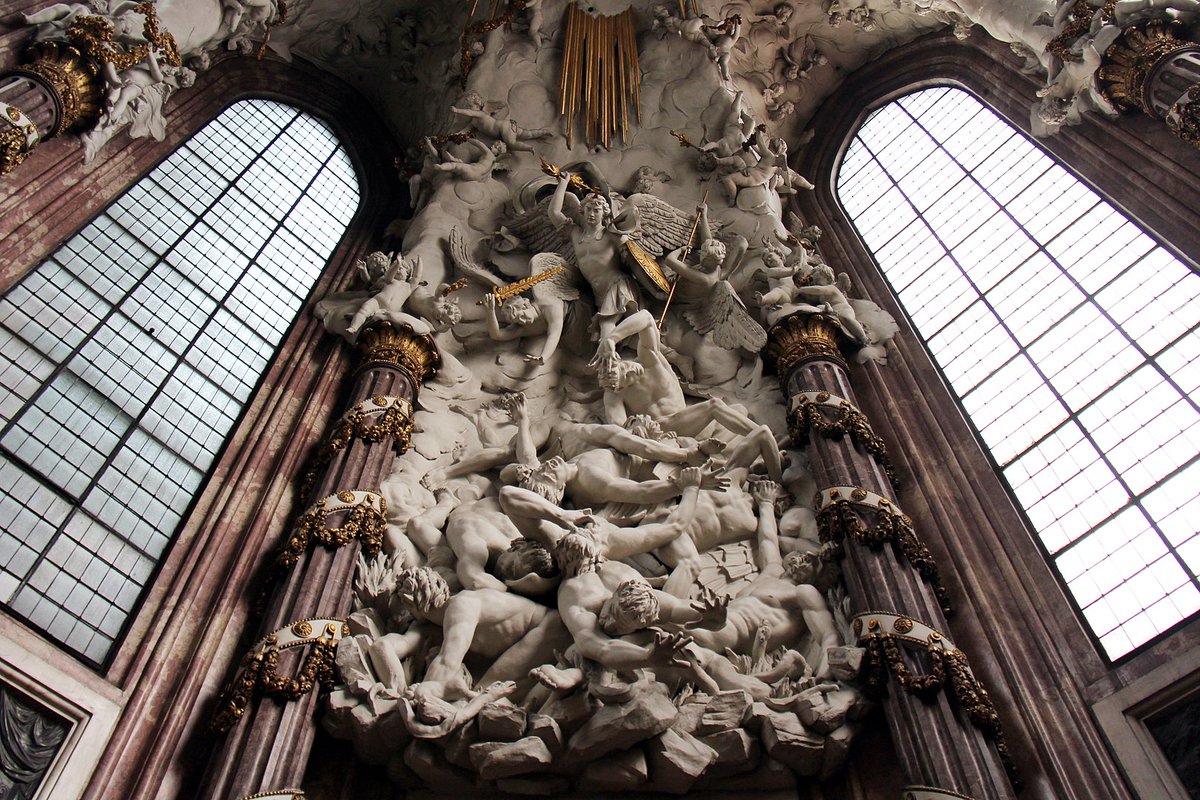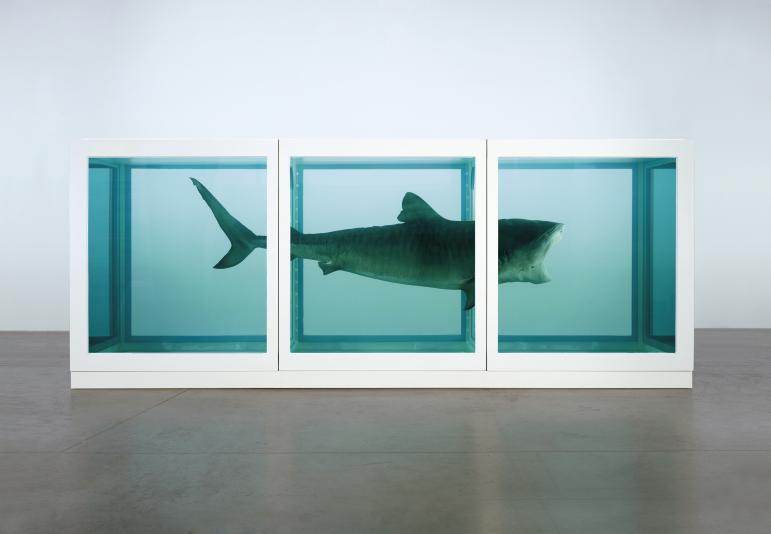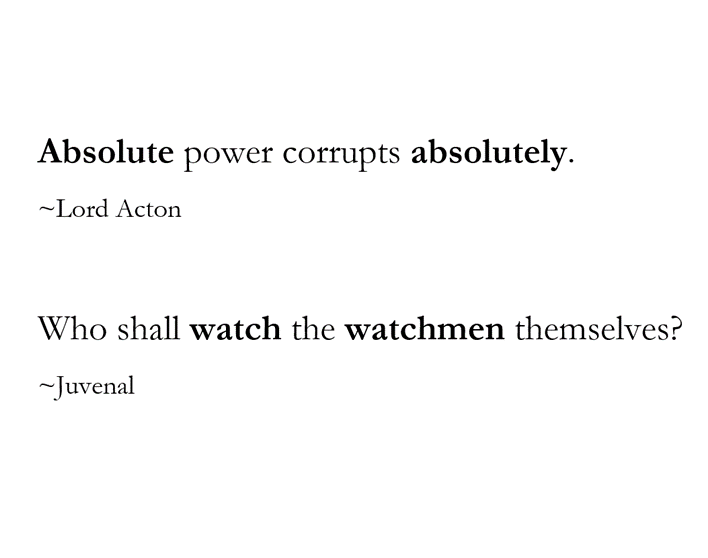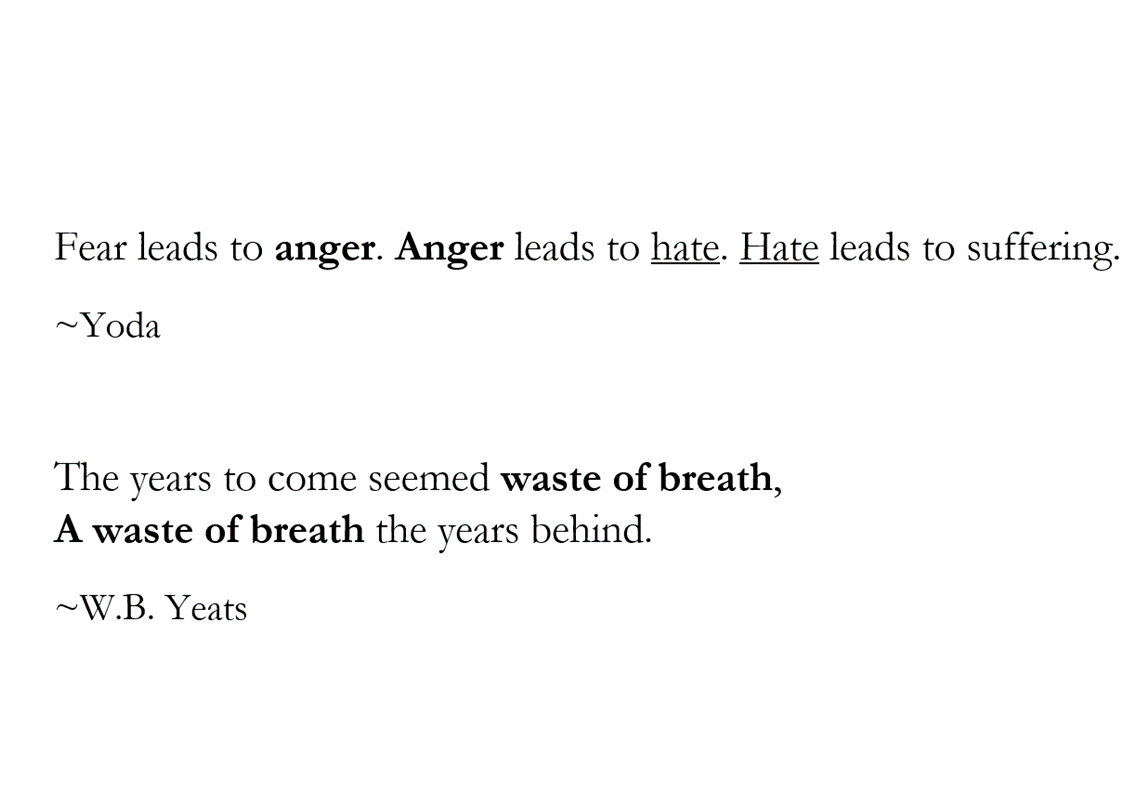
This banana duct-taped to a wall was called "Comedian" by its creator, Maurizio Cattelan.
It included a certificate of authenticity, plus instructions for display. The banana and the tape can both be replaced because the physical form of Comedian is not the work itself.
It included a certificate of authenticity, plus instructions for display. The banana and the tape can both be replaced because the physical form of Comedian is not the work itself.

Comedian sold for a paltry $120,000.
That's nothing compared to Jeff Koons' stainless steel Rabbit, which sold for $91 million in 2019.
That's nothing compared to Jeff Koons' stainless steel Rabbit, which sold for $91 million in 2019.

Asking whether these things are even art is, perhaps, the point.
But they are called works of art, they are placed in galleries, and they are sold as works of art.
So let's accept that Comedian is art. Now we must ask: why?
But they are called works of art, they are placed in galleries, and they are sold as works of art.
So let's accept that Comedian is art. Now we must ask: why?
The best way to frame this is by imagining what future historians will say about modern art.
Think of how we look back on art of the past.
The Farnese Hercules, originally from the 4th century B.C., speaks to a kind of superhuman idealism.
Think of how we look back on art of the past.
The Farnese Hercules, originally from the 4th century B.C., speaks to a kind of superhuman idealism.

While Medieval art was primarily religious in nature. Consider these statues from the Cathedral of Chartres.
Their message needs no explaining.
Their message needs no explaining.

Bernini's Proserpina, from 1622, signifies an embrace of Classical Antiquity over Christian Medievalism.
And an era of supreme craftsmanship in which cold marble became living flesh...
And an era of supreme craftsmanship in which cold marble became living flesh...

The rather garish Basin of Saturn from the Palace of Versailles, completed in 1677, seems like a symbol of unshackled decadence and luxury, whether intentional or otherwise. 

The Fall of the Angels in Vienna, from 1781, indicates an attempt to marry religion with the ideals of sophistication, beauty, craft, and (perhaps) extravagance exemplified by Bernini and the Basin of Saturn. 

Bavaria (1850) is a monumental statue in Munich which was intended as a female representation of Bavaria itself.
It was a conscious rejection of Classical Antiquity; Bavaria was about establishing a new national identity.
It was a conscious rejection of Classical Antiquity; Bavaria was about establishing a new national identity.

Auguste Rodin's The Thinker (1904) is famous and much-loved for a reason.
It touches on a universal quality of the human condition, and does so in a way that anybody can clearly understand.
It touches on a universal quality of the human condition, and does so in a way that anybody can clearly understand.

While the Worker and Kolkhoznitza Woman, completed in 1937 in the USSR, is a clear statement of intent.
It was a vision of what that society believed it could achieve; an ideal, reshaped humanity looking ambitiously and aggressively to the future.
It was a vision of what that society believed it could achieve; an ideal, reshaped humanity looking ambitiously and aggressively to the future.

And we cannot fail to mention Marcel Duchamp's famous Fountain of 1917, which blew the doors wide open.
He wanted to shift the focus of art from physical craft to intellectual interpretation.
And he certainly achieved his aim.
He wanted to shift the focus of art from physical craft to intellectual interpretation.
And he certainly achieved his aim.

This line of thinking was taken to its extreme by Michael Craig-Martin in 1973.
This piece is entitled "An Oak Tree."
This piece is entitled "An Oak Tree."

Throughout the historical examples given above, skill and comprehensibility were clearly required for something to be considered art.
That is no longer the case.
Which isn't to say there's no value in modern art. Some of it is deeply thought-provoking, per Duchamp's intention.
That is no longer the case.
Which isn't to say there's no value in modern art. Some of it is deeply thought-provoking, per Duchamp's intention.
But the message is clear: ideas rather than aesthetics are the name of the game now.
To shock and perplex *intellectually* is what future historians will see as the intention of something like Damien Hirst's The Physical Impossibility of Death in the Mind of Someone Living.
To shock and perplex *intellectually* is what future historians will see as the intention of something like Damien Hirst's The Physical Impossibility of Death in the Mind of Someone Living.

Comedian is art because, in the modern era, *anything* can be art.
All you have to do is say: this is art.
And... it is.
All you have to do is say: this is art.
And... it is.
Some people conclude that Fontana's 'Spatial Concept 'Waiting'' signifies we have simply run out of ideas.
That's the opposite of the truth.
Rather: ideas are all we have now.
That's the opposite of the truth.
Rather: ideas are all we have now.

In the 21st century anybody can be an artist. All you need is an idea and the audacity to implement it.
You or I could have taped a banana to a wall and claimed it was art. But we didn't. Somebody else did.
So... kudos to Signor Cattelan I suppose.
You or I could have taped a banana to a wall and claimed it was art. But we didn't. Somebody else did.
So... kudos to Signor Cattelan I suppose.
Skill is no longer a prerequisite for art, that much is clear.
Which doesn't mean modern artists aren't skilled or talented - many of them clearly are.
But Tracey Emin's My Bed wouldn't have been exhibited in a gallery if skill or craft were considered a vital part of art.
Which doesn't mean modern artists aren't skilled or talented - many of them clearly are.
But Tracey Emin's My Bed wouldn't have been exhibited in a gallery if skill or craft were considered a vital part of art.

Even if you think Maurizio Cattelan was making a mockery of this very fact, that doesn't really matter.
He's still playing the game. He's retelling Duchamp's once-brilliant but now stale joke.
And Comedian is proof that comprehensibility is no longer necessary.
He's still playing the game. He's retelling Duchamp's once-brilliant but now stale joke.
And Comedian is proof that comprehensibility is no longer necessary.
This is what the gallery which displayed Comedian said about it:
"Comedian, with its simple composition, ultimately offered a complex reflection of ourselves."
I dare the say the Thinker needs no such explanation.
"Comedian, with its simple composition, ultimately offered a complex reflection of ourselves."
I dare the say the Thinker needs no such explanation.

Again, this isn't a commentary on the merits or demerits of modern art - that's a discussion for another day.
We are simply looking at what it undeniably is.
We are simply looking at what it undeniably is.
One day historians of the future will place our era alongside those which have come before (and which will follow us).
And they'll compare Comedian and An Oak Tree with the Farnese Hercules and the Pieta.
What do you think they'll conclude about the 21st century?



And they'll compare Comedian and An Oak Tree with the Farnese Hercules and the Pieta.
What do you think they'll conclude about the 21st century?




• • •
Missing some Tweet in this thread? You can try to
force a refresh



















